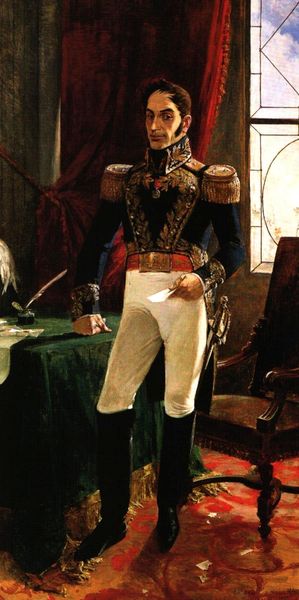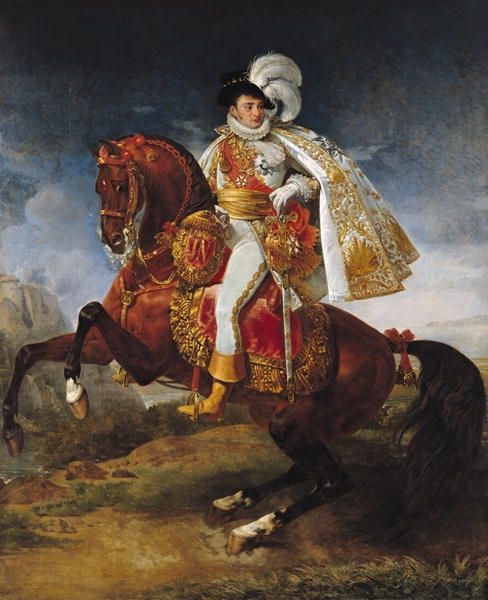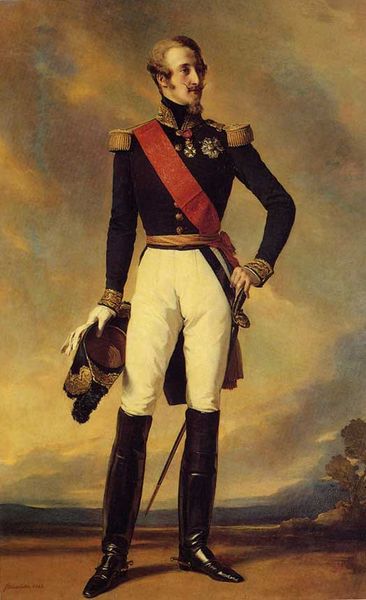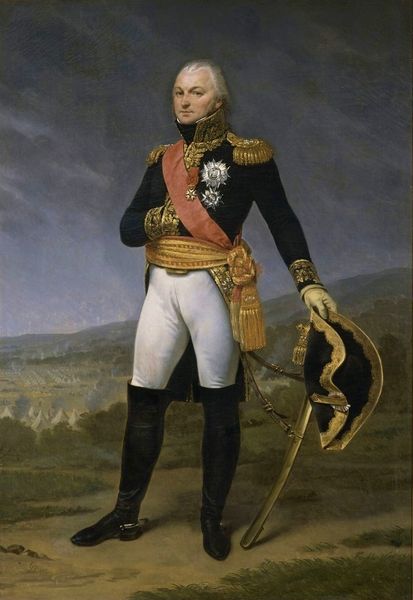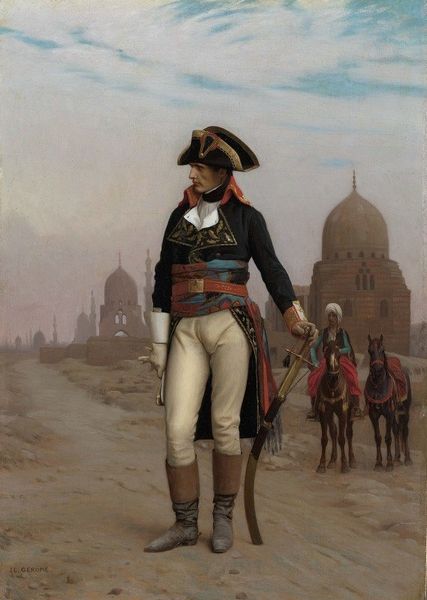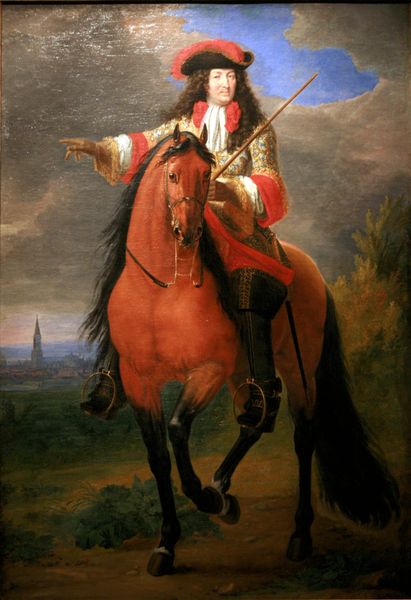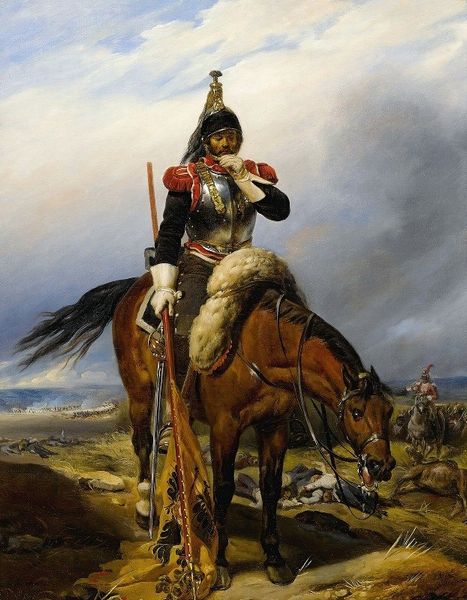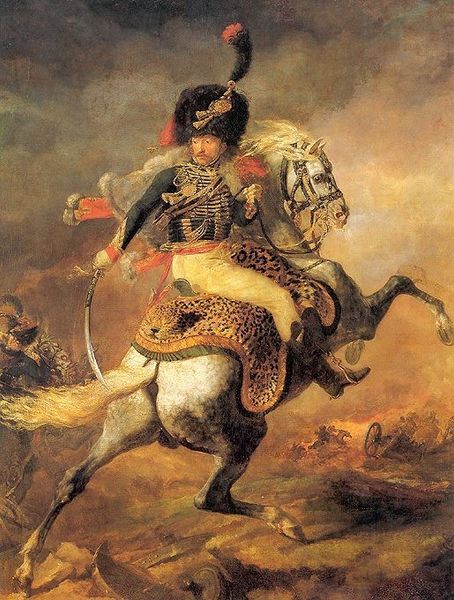
Portrait of Second Lieutenant Charles Legrand 1810
0:00
0:00
painting, oil-paint
#
portrait
#
painting
#
oil-paint
#
landscape
#
figuration
#
oil painting
#
underpainting
#
romanticism
#
horse
#
history-painting
#
realism
Copyright: Public domain
Curator: This is Antoine-Jean Gros's "Portrait of Second Lieutenant Charles Legrand," painted in 1810 using oil on canvas. Editor: My first impression is of an almost theatrical elegance. The young officer's stance, the glint of the armor, and even the horse seem carefully posed to project an aura of martial nobility. Curator: Gros certainly understood the spectacle of power. He was, after all, Napoleon’s favored artist. I'm particularly struck by the details of the metalwork, look at the articulation and the way it reflects the light. I see how he meticulously constructed the image with palpable surface and volume. Editor: Absolutely, it's an interesting study in the era's fascination with military prowess, and perhaps a reflection of a specific gendered vision of power. Gros constructs this youthful image of Legrand, surrounded by markers of his station and the horse—often associated with masculinity and control. How does that resonate when considering France at that historical moment? Curator: Contextually, you're right, Napoleon was attempting to legitimize his rule through symbols and images like these portraits of loyal officers. Beyond the pure symbolism, though, examine Gros’s skillful layering of pigment to suggest metallic textures through oil. Consider his use of light and shadow to bring that metal to life, and you have this palpable and quite striking portrait. Editor: It's impossible to divorce the artistry from its context. Legrand would have participated in this propagation, knowingly or unknowingly, and the consumption of art like this portrait served a social function that reached far beyond its subject's physical traits. What kind of message were such images sending about the French military identity? Curator: Precisely, Gros’s painting also illustrates how artistry and politics frequently intertwine. When we see how art becomes the product of cultural forces it shows what we expect to get. Here we're able to experience not just the historical depiction of someone, but we also get an important example that shows this convergence. Editor: It certainly does reveal art's complex role during moments of dramatic transformation. I appreciate how Gros’ "Portrait of Second Lieutenant Charles Legrand" provides so many avenues to examine this pivotal moment in history. Curator: Indeed. Studying its materials and techniques sheds a direct light on this critical historical artifact.
Comments
No comments
Be the first to comment and join the conversation on the ultimate creative platform.
